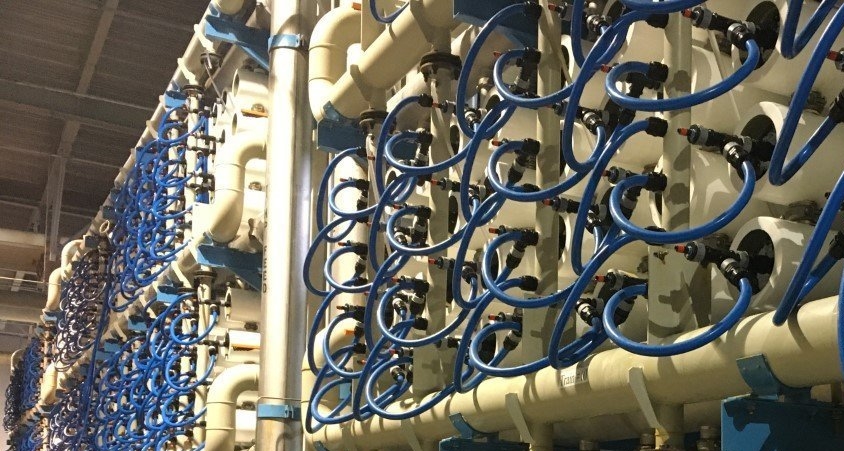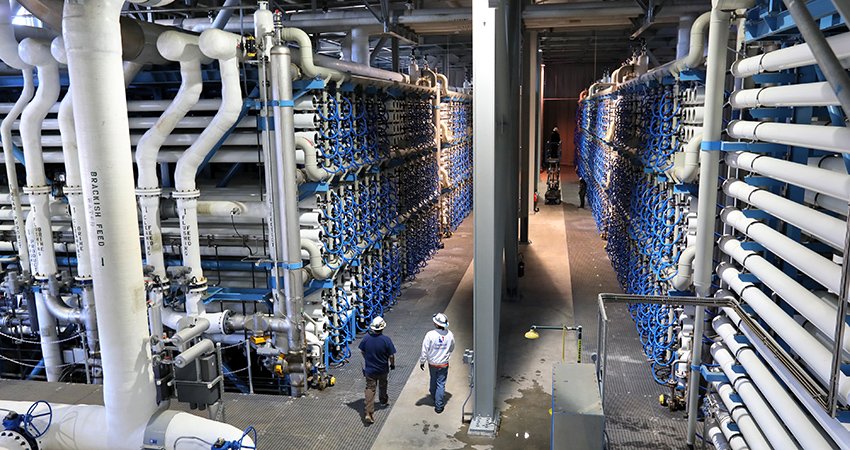UC Expert Helps Save Water, Increase Supply
Earlier this year, officials in Southern California declared a water shortage emergency resulting in restrictions such as limiting outdoor water use to one day of the week.
Earlier this year, officials in Southern California declared a water shortage emergency resulting in restrictions such as limiting outdoor water use to one day of the week.
Two decades of the Southwest megadrought have marked Arizona’s driest period in 1,200 years. With climate change in full swing, greenhouse emissions well above pledged targets and the state facing cutbacks to its share of dwindling Colorado River water, many wonder: Is drought the new normal?
The last few days of rain and snow provided some welcome relief, but don’t be fooled — the water shortage is far from over. That wet trend will have to continue if there’s to be any real dent in the ongoing drought. Burbank, LAX, Lancaster and other places in Los Angeles County broke some rainfall records, but when it comes to drought and much of the Southland’s drinking water supply, it’s the snowfall up north that really matters.
As California enters a fourth straight year of drought, more residents are taking advantage of free, online webinars helping them conserve water and create beautiful landscapes at the same time. New three-hour workshops are scheduled through December, funded in part by the County of San Diego Watershed Protection Program.
As California enters a fourth straight year of drought, more residents are taking advantage of free, online webinars helping them create a beautiful, water-efficient outdoor landscape. New three-hour workshops are now scheduled through December, funded in part by the County of San Diego Watershed Protection Program.
The Claude “Bud” Lewis Carlsbad Desalination Plant has served more than 100 billion gallons of high-quality, locally controlled water over the past seven years – a milestone passed in late October, as California entered a fourth consecutive year of severe drought.
Operations at one of Spain’s largest hydropower plants have been halted due to drought-like conditions, foreshadowing the future of the rapidly receding Lake Mead.
Electric utility company Endesa SA has shut down its facility in Mequinenza, Zaragoza, Spain after its water levels receded below 23 percent capacity, Bloomberg reported. This is below the minimum required to produce electricity. The plant first opened in 1966, and until now, has never been shut down.
Due to the persistence of California’s unprecedented megadrought, capturing rainfall when it occurs is a conservation priority. Several water districts in North San Diego County are offering discounted rain barrels.
The Claude “Bud” Lewis Carlsbad Desalination Plant has served more than 100 billion gallons of high-quality, locally controlled water over the past seven years – a milestone passed in late October, as California entered a fourth consecutive year of severe drought.
The plant produces an average of more than 50 million gallons of high-quality, locally controlled water every day. It’s a foundational water supply for the San Diego region that minimizes vulnerability to drought and other water supply emergencies. The facility is the largest, most technologically advanced and energy-efficient desalination plant in the nation, and it has provided a sustainable water supply to residents and businesses in San Diego County since December 2015.
“As we mark this achievement, water from the seawater desalination plant continues to reduce our dependence on imported water sources, which has the effect of making more water available for drought-stricken communities elsewhere,” said Mel Katz, Board chair for the San Diego County Water Authority. “Since coming online in 2015, the Carlsbad Desalination Plant has met nearly 10% of the region’s water demand, and it will be a core water resource for decades to come.”

The San Diego County Water Authority added desalinated seawater to its supply portfolio in 2015 with the start of commercial operations at the nation’s largest seawater desalination plant. Photo: San Diego County Water Authority
“Reaching 100 billion gallons demonstrates the value, effectiveness, and reliability of the desalination plant, as it produces high-quality water to help meet the needs of the region’s residents and businesses,” said Channelside President, Sachin Chawla.
The desalination plant is a key piece of the region’s multi-decade strategy to diversify its water supply portfolio. A 30-year Water Purchase Agreement between Poseidon (Channelside) LP and the Water Authority allows for the production of up to 56,000 acre-feet of water per year, enough to meet the needs of approximately 400,000 people.

Reverse osmosis is the heart of the Carlsbad Desalination Plant. During this process, dissolved salt and other minerals are separated from the water, making it fit for consumption. This reverse osmosis building contains more than 2,000 pressure vessels housing more than 16,000 reverse osmosis membranes. Photo: San Diego County Water Authority
Desalination uses reverse osmosis technology to remove water molecules from seawater. Water from the ocean is forced through tightly-wrapped, semipermeable membranes under very high pressure. The membranes allow the smaller water molecules to pass through, leaving salt and other impurities to be discharged from the facility.
More information about the desalination plant is at carlsbaddesal.com and sdcwa.org.
The cost of water has over last two decades risen dramatically across San Diego County as a result of investments in desalination, ongoing maintenance, ever-increasing energy prices and unprecedented conservation.